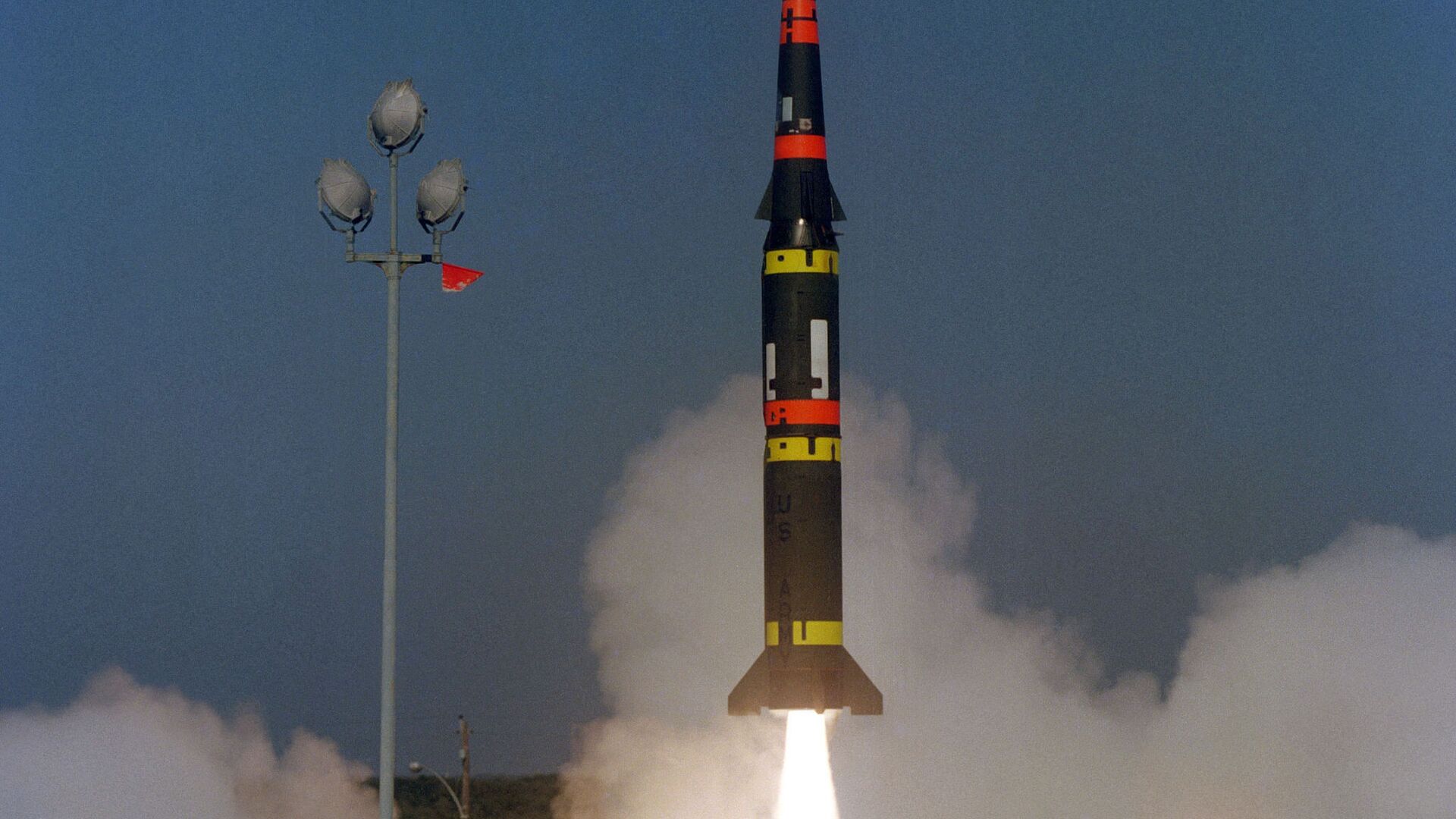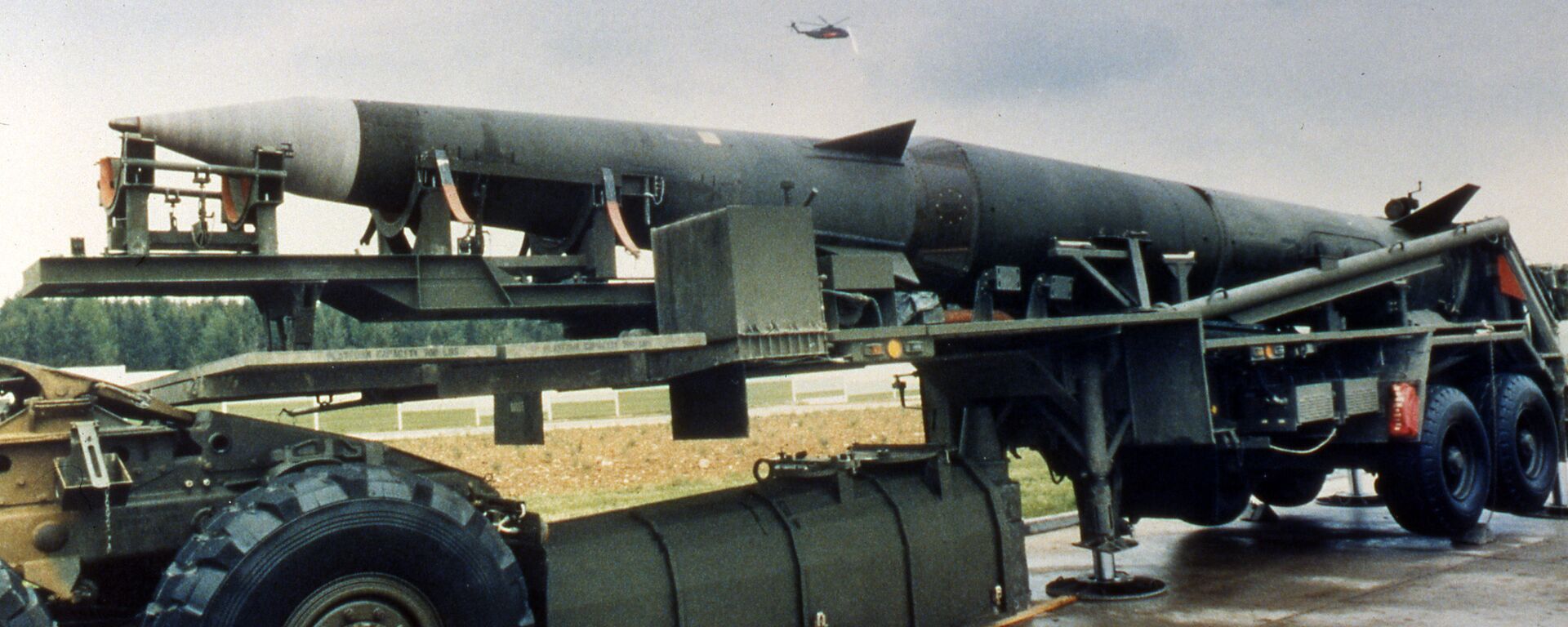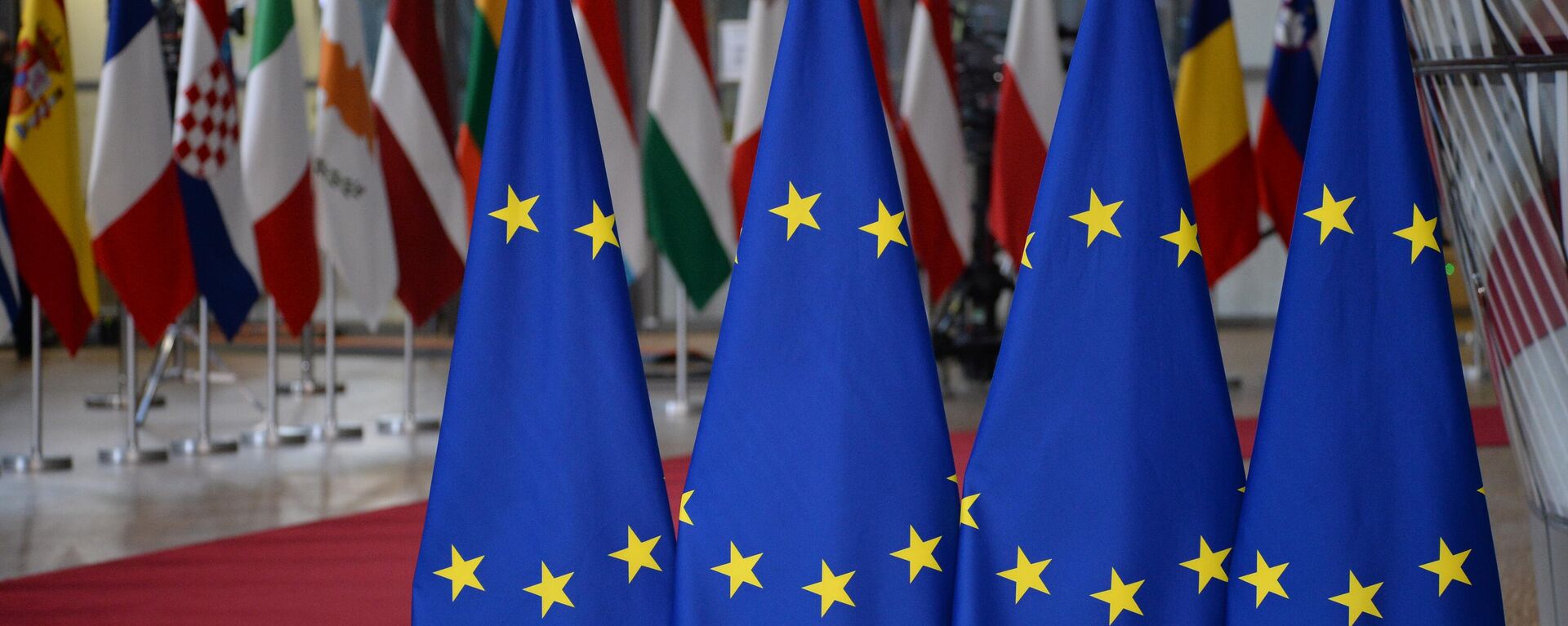https://sputnikglobe.com/20240718/us-euromissile-deployment-designed-to-line-lockheeds-pockets-quick-before-biden-is-out-of-office-1119423312.html
US Euromissile Deployment Designed to Line Lockheed’s Pockets Quick Before Biden is Out of Office
US Euromissile Deployment Designed to Line Lockheed’s Pockets Quick Before Biden is Out of Office
Sputnik International
Moscow has officially warned that it will leave all options on the table in its response to the planned deployment of US nuclear-capable Tomahawk and hypersonic missiles in Germany. Former DoD analyst Karen Kwiatkowski explains why Washington’s decision is so dangerous, and why the Biden administration is proceeding anyway.
2024-07-18T19:07+0000
2024-07-18T19:07+0000
2024-07-18T19:07+0000
analysis
karen kwiatkowski
military & intelligence
joe biden
sergei ryabkov
russia
germany
nato
lockheed martin
tomahawk
https://cdn1.img.sputnikglobe.com/img/07e8/07/12/1119423864_0:333:2048:1485_1920x0_80_0_0_5222c9596434e084687ff005c786071b.jpg
Russian Deputy Foreign Minister Sergei Ryabkov told reporters on Thursday that US plans to deploy long-range cruise and hypersonic missiles in the heart of Europe may prompt a tit-for-tat response from Russia.The senior Russian diplomat emphasized that Kaliningrad region – which is expected to be targetable by the US long-range missiles from Germany, will continue to have its security guaranteed if and when the American weapons are deployed.“If the representatives of the German government consider it justified to start some kind of escalatory measures under the pretext of what [capabilities] we have in this particular region, we will react in terms of compensatory measures in a way we deem to be most acceptable,” Ryabkov said.Earlier in the day, German media published an interview with German Defense Minister Boris Pistorius in which he suggested that Berlin’s agreement to host the American long-range weapons was “nothing more than countering the threat from Russia in connection with the deployment of Iskander missiles in the Kaliningrad region.”Pistorius assured that the current US plans bear no resemblance to the original 1980s Euromissile crisis, which brought the planet to the brink of a world-ending nuclear war in 1983, and was accompanied by the largest popular mass protests in modern European history. Three million people in Western Europe, and two million more elsewhere, protested the US deployment of Pershing II ballistic and nuclear cruise missiles in the fall of 1983.“There is no doubt a domestic stimulus impact that the administration hopes to leverage – plus a Biden Administration sense of urgency as they and much of NATO recognizes that US NATO policy could be rapidly reversed under a Trump Administration,” Kwiatkowski explained.Just as the 1980s Euromissile crisis dramatically increased nuclear tensions by moving strike systems to within a few minutes’ flight time of Moscow, which meant that Soviet officials would have only moments to identify, analyze and response to a possible enemy attack, Kwiatkowski expects the planned 2026 deployment to raise the specter of an irreversible nuclear escalation in a similar manner.In that sense, the deployment will raise regional tensions “not only between NATO and its target adversaries, but also between the people in Europe and their own governments and the European Parliament,” she said.The fears in Moscow that were caused by the Euromissiles were not mere paranoia. In November 1983, the Soviet military put its nuclear forces on hair trigger alert in preparation to respond to NATO aggression after the alliance kicked off its Able Archer war games, which simulated an all-out attack on the USSR.NATO did not recognize the seriousness of the nuclear danger caused by its provocations until many years later.If the US proceeds with the missile deployment two years from now as planned, it will be anyone’s guess what kinds of security crisis such a step could foster, especially in light of the Western alliance’s 1,000 km eastward advance toward the Russian border through NATO expansion, the ongoing, highly dangerous and escalatory proxy war in Ukraine, and Pentagon scheming with its so-called Prompt Global Strike (Conventional Prompt Strike) initiative, which, in a concept far more dangerous than anything conceived during the Cold War, envisions a massed conventional missile attack against strategic adversaries to decapitate their leadership and eliminate as much of their nuclear potential as possible.The Soviet Union and the United States signed Intermediate-Range Nuclear Forces Treaty to eliminate land-based nuclear weapons platforms in the 500-5,000 km range in 1987, with the agreement designed to reduce nuclear risks in Europe. Washington pulled out of that agreement in 2019 and immediately resumed the testing and development of a new range of long-range ground-launched missiles.
https://sputnikglobe.com/20240718/future-location-of-us-arms-in-germany-undecided-1119420473.html
https://sputnikglobe.com/20240717/china-in-the-bullseye-nato-expands-definition-of-north-atlantic-to-confront-beijing-1119411953.html
https://sputnikglobe.com/20240626/germans-objection-to-ukraine-support-reflected-in-poor-electoral-results--scholz-1119128022.html
https://sputnikglobe.com/20210219/on-a-hair-trigger-soviets-armed-108-jets-for-nuclear-war-during-1983-nato-drills-docs-show-1082132128.html
https://sputnikglobe.com/20240628/putin-russia-must-respond-to-us-actions-necessary-to-start-production-of-inf-systems-1119169000.html
russia
germany
Sputnik International
feedback@sputniknews.com
+74956456601
MIA „Rossiya Segodnya“
2024
News
en_EN
Sputnik International
feedback@sputniknews.com
+74956456601
MIA „Rossiya Segodnya“
Sputnik International
feedback@sputniknews.com
+74956456601
MIA „Rossiya Segodnya“
how dangerous is us missile deployment in germany, what kinds of missiles will us deploy in germany, how will russia react and respond to us missile deployment in europe
how dangerous is us missile deployment in germany, what kinds of missiles will us deploy in germany, how will russia react and respond to us missile deployment in europe
US Euromissile Deployment Designed to Line Lockheed’s Pockets Quick Before Biden is Out of Office
Moscow has officially warned that it will leave all options on the table in its response to the planned deployment of US nuclear-capable Tomahawk and hypersonic missiles in Germany. Former DoD analyst Karen Kwiatkowski explains why Washington’s decision is so dangerous, and why the Biden administration is proceeding anyway.
Russian Deputy Foreign Minister Sergei Ryabkov
told reporters on Thursday that US plans to deploy long-range cruise and hypersonic missiles in the heart of Europe may prompt a tit-for-tat response from Russia.
“In this situation, accounting for the totality [of the military potential, ed.] of the countries that are members of NATO, we must calibrate our responses without any internal constraints, so to speak, in terms of what to place, when and where to place [weapons],” Ryabkov said. “This is not a threat to anyone. This is a means to finding the most effective algorithm, from the cost perspective, for responding to shifting challenges.”
The senior Russian diplomat emphasized that Kaliningrad region – which is expected to be targetable by the US long-range missiles from Germany, will continue to have its security guaranteed if and when the American weapons are deployed.
“If the representatives of the German government consider it justified to start some kind of escalatory measures under the pretext of what [capabilities] we have in this particular region, we will react in terms of compensatory measures in a way we deem to be most acceptable,” Ryabkov said.
Earlier in the day, German media published an
interview with German Defense Minister Boris Pistorius in which he suggested that Berlin’s agreement to host the American long-range weapons was “nothing more than countering the threat from Russia in connection with the deployment of Iskander missiles in the Kaliningrad region.”
Pistorius assured that the current US plans bear no resemblance to the original 1980s Euromissile crisis, which brought the planet to the brink of a world-ending nuclear war in 1983, and was accompanied by the largest popular mass protests in modern European history. Three million people in Western Europe, and two million more elsewhere, protested the US deployment of Pershing II ballistic and nuclear cruise missiles in the fall of 1983.
“Part of this is an attempt to lock in the NATO market for these missiles via US production orders to RTX and Lockheed Martin,” Karen Kwiatkowski, a retired US Air Force Lieutenant Colonel and former DoD analyst-turned whistleblower, told Sputnik, commenting on the Biden administration’s apparent plans to repeat the 1980s missile crisis.
“There is no doubt a domestic stimulus impact that the administration hopes to leverage – plus a Biden Administration sense of urgency as they and much of NATO recognizes that US NATO policy could be rapidly reversed under a Trump Administration,” Kwiatkowski explained.
Just as the 1980s Euromissile crisis dramatically increased nuclear tensions by moving strike systems to within a few minutes’ flight time of Moscow, which meant that Soviet officials would have only moments to identify, analyze and response to a possible enemy attack, Kwiatkowski expects the planned 2026 deployment to raise the specter of an irreversible nuclear escalation in a similar manner.
“The reason intermediate and longer range missiles were removed from Europe three plus decades ago was precisely for this reason – they were unnecessary and provocative,” she explained. “Specifically, offensive long range missiles in Europe created, as it will create [in 2026], new retaliatory or pre-emptive targets that are impossible to cost-effectively defend, holding European populations hostage to US foreign policy,” Kwiatkowski emphasized.
In that sense, the deployment will raise regional tensions “not only between NATO and its target adversaries, but also between the people in Europe and their own governments and the European Parliament,” she said.
Among the protesters demonstrating against the US missile deployment in the 1980s was a younger, bushier-haired Olaf Scholz, who, as deputy chairman of the SPD’s youth wing at the time, apparently recognized the nuclear risks inherent to such steps which his government has now apparently blinded itself to.
The fears in Moscow that were caused by the Euromissiles were not mere paranoia. In November 1983, the Soviet military put its nuclear forces on hair trigger alert in preparation to respond to NATO aggression after the alliance kicked off its Able Archer war games, which simulated an all-out attack on the USSR.
NATO did not recognize the seriousness of the nuclear danger caused by its provocations
until many years later.
19 February 2021, 22:31 GMT
If the US proceeds with the missile deployment two years from now as planned, it will be anyone’s guess what kinds of security crisis such a step could foster, especially in light of the Western alliance’s
1,000 km eastward advance toward the Russian border
through NATO expansion, the ongoing,
highly dangerous and escalatory proxy war in Ukraine, and Pentagon scheming with its so-called
Prompt Global Strike (Conventional Prompt Strike) initiative, which, in a concept far more dangerous than anything conceived during the Cold War,
envisions a massed conventional missile attack against strategic adversaries to decapitate their leadership and eliminate as much of their nuclear potential as possible.
The Soviet Union and the United States signed Intermediate-Range Nuclear Forces Treaty to eliminate land-based nuclear weapons platforms in the 500-5,000 km range in 1987, with the agreement designed to reduce nuclear risks in Europe. Washington pulled out of that agreement in 2019 and immediately resumed the testing and development of a new range of long-range ground-launched missiles.







